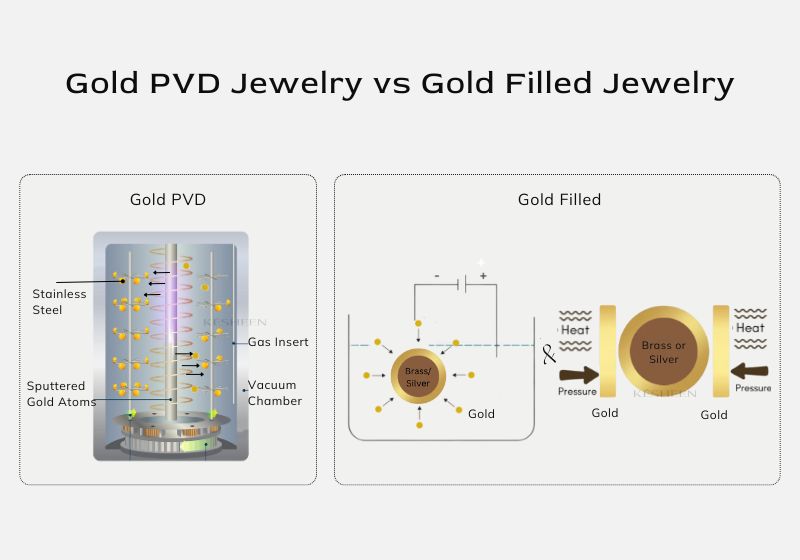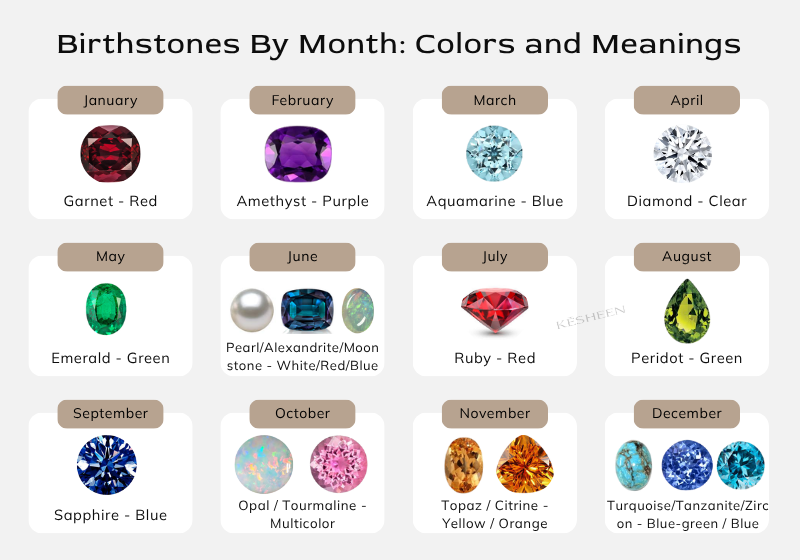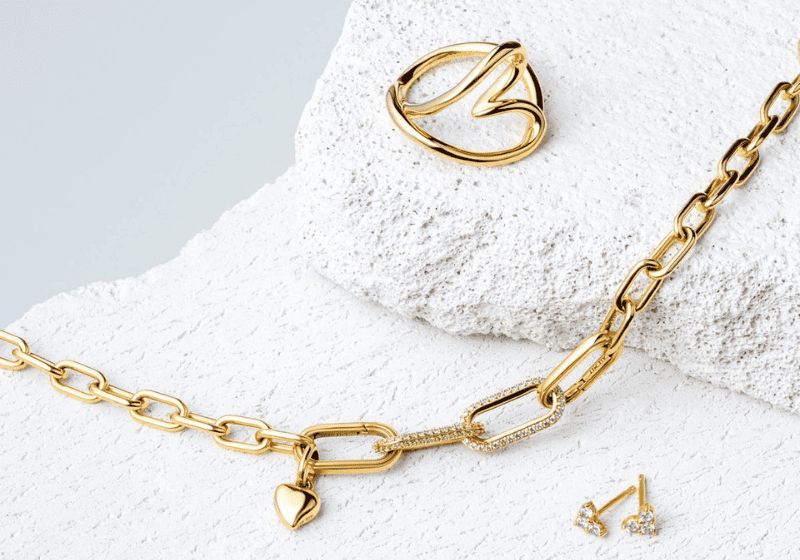Gold pieces come in different forms—each with its own composition, manufacturing method, durability, and cost. From luxury brands to affordable everyday wear, gold’s lasting appeal differs. Two of the most talked about gold types are: Gold PVD and Gold Filled. They both exude brilliance and elegance that lasts, but have some notable differences.
Join us as we compare gold PVD vs gold filled, uncover what sets them apart, and which is more suitable for your jewelry brand.
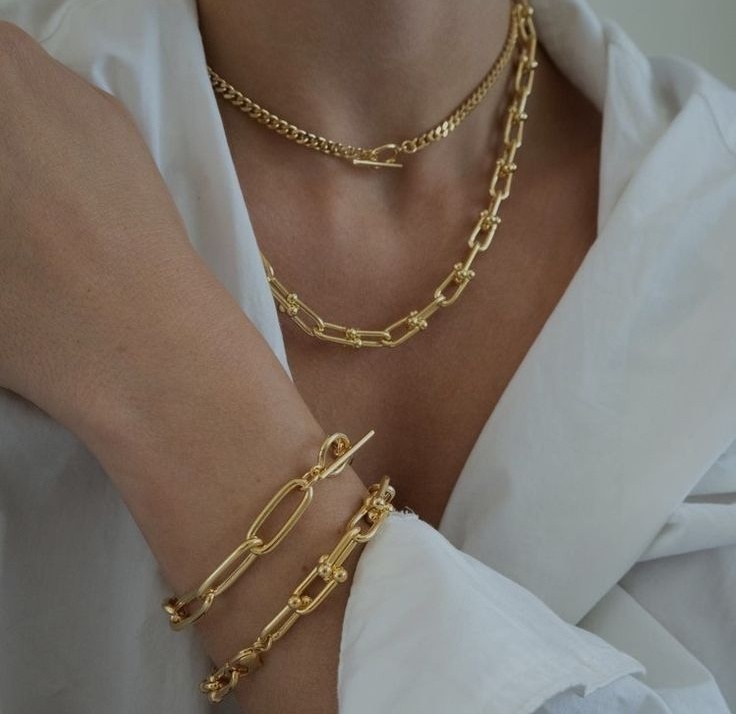
What is PVD Gold Jewelry?
Physical Vapor Deposition (PVD) gold is a type of gold jewelry made by coating a stainless steel metal with a thin layer of gold, usually 0.03-0.08 microns. It involves a high-tech vacuum coating process that bonds gold onto the metal’s surface at a molecular level. PVD coating jewelry results in a sleek, durable, and highly resistant finish that doesn’t easily tarnish or fade.
What is Gold Filled Jewelry?
Gold filled jewelry is composed of a base metal (often brass or silver) and a thick amount of gold created by mechanical or chemical bonding. For a jewelry to be called “gold filled,” the gold content in it must be at least 5% or 1/20th of the jewelry’s weight. This makes the jewelry share a very similar appearance as solid gold.
Gold PVD vs Gold Filled Jewelry: What’s the Key Difference?
While gold PVD jewelry and gold filled pieces are composed of a base metal and some amounts of gold, they have many differences that set them apart.
Below is a detailed gold PVD coating vs gold filled jewelry breakdown:
| Feature | Gold PVD | Gold Filled |
| Base Metal | Stainless Steel | Brass or Silver |
| Gold Layer Thickness | 0.03-0.06 microns | ≥5% or 1/20th by weight |
| Manufacturing Method | Physical Vapor Deposition | Mechanical or chemical bonding |
| Durability | Generally lasts for at least 1-2 years | Generally lasts for 3-5 years with proper care |
| Cost | More cost-effective | Higher material cost due to thick gold layer |
Gold Thickness & Base Metal
- Gold PVD: Composed of a base metal (316L stainless steel jewelry is often used by top manufacturers) and a PVD coating thickness for jewelry, ranging from 0.03-0.08 microns. The thickness can sometimes go nearly to 0.1 microns.
- Gold Filled: Composed of a base metal (usually brass or silver) and a substantial amount of gold that must amount to at least 5% of 1/20th of the jewelry’s total weight.
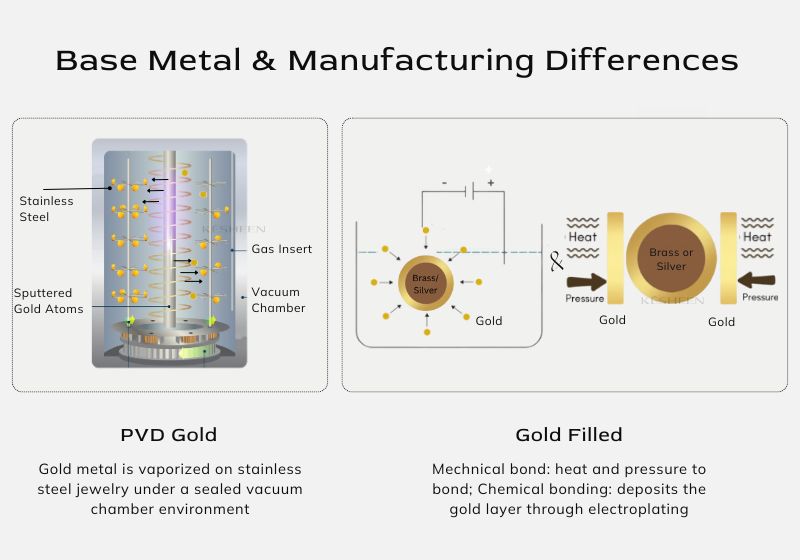
Manufacturing Method
- Gold PVD: The process of PVD coating jewelry involves placing stainless steel into a sealed vacuum chamber, where it is heated and bonded with gold ions. Learn more in our detailed guide on PVD coating jewelry. This method allows for mass production with consistent finishes.
- Gold Filled: Has two manufacturing methods – mechanical bonding and chemical binding. For mechanical bonding, heat and pressure are used to bond the base metal with the gold. But in chemical bonding, the base metal and gold are bonded together using an electric current.
Durability Difference
- Gold PVD: How long does PVD gold jewelry last? PVD gold jewelry can last at least 1-2 years thanks to the superior resistance of Titanium Nitride that’s used to ensure a long-lasting color. This makes the jewelry suitable for active lifestyles and everyday wear.
- Gold Filled: How long does gold filled jewelry last? With proper care, it generally lasts for 3-5 years. Its thick layer of gold bonded to the base metal provides long-lasting color and durability, making it more resilient than standard gold plating.
Cost & Price Difference
- Gold PVD: PVD gold jewelry is often made with smaller amounts of gold, which reduces cost. Stainless steel is used as the base, making it cost-effective for large-scale collections.
- Gold Filled: Uses a thicker amount of gold, as the total gold content must be at least 5% of the jewelry’s weight. This makes it more expensive and best suited for people seeking mid-luxury.
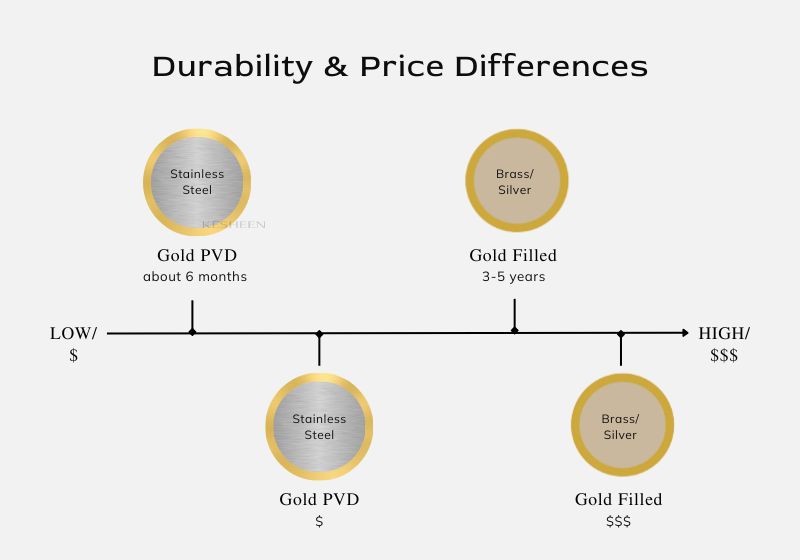
Gold PVD vs Gold Filled Jewelry: What’s the Similarity
When comparing PVD vs gold filled jewelry, both share key qualities: they contain real gold and offer durability, as specified below:
All Contain Real Gold
Gold PVD meaning includes bonding a stainless steel base with a thin gold layer. Gold filled also contains gold content (minimum of 5% of the jewelry’s weight). The gold content included in the jewelry’s making is real gold.
Tarnish Resistance & Hypoallergenic
Does gold PVD tarnish? No, PVD gold stainless steel does not tarnish easily, offering excellent resistance to scratches and fading.
Does gold filled jewelry tarnish? No. Just like PVD gold, it is highly resistant to tarnishing and maintains its color over time.
While both are superior in sweat and water exposure, it’s advised to wipe and dry them after coming in contact with moisture. They are both hypoallergenic if manufactured properly (compliance with EU Nickel Directive).
Is PVD Gold Better than Gold Filled Jewelry?
The difference between gold filled and PVD gold plated jewelry needs to be examined specifically to your needs and priorities.
Gold PVD stainless steel jewelry is better for durability, tarnish resistance, and daily wear, especially for active lifestyles and water environments.
Gold filled jewelry is also durable, but is better suited for people seeking jewelry with higher gold content and a more substantial, classic gold feel.
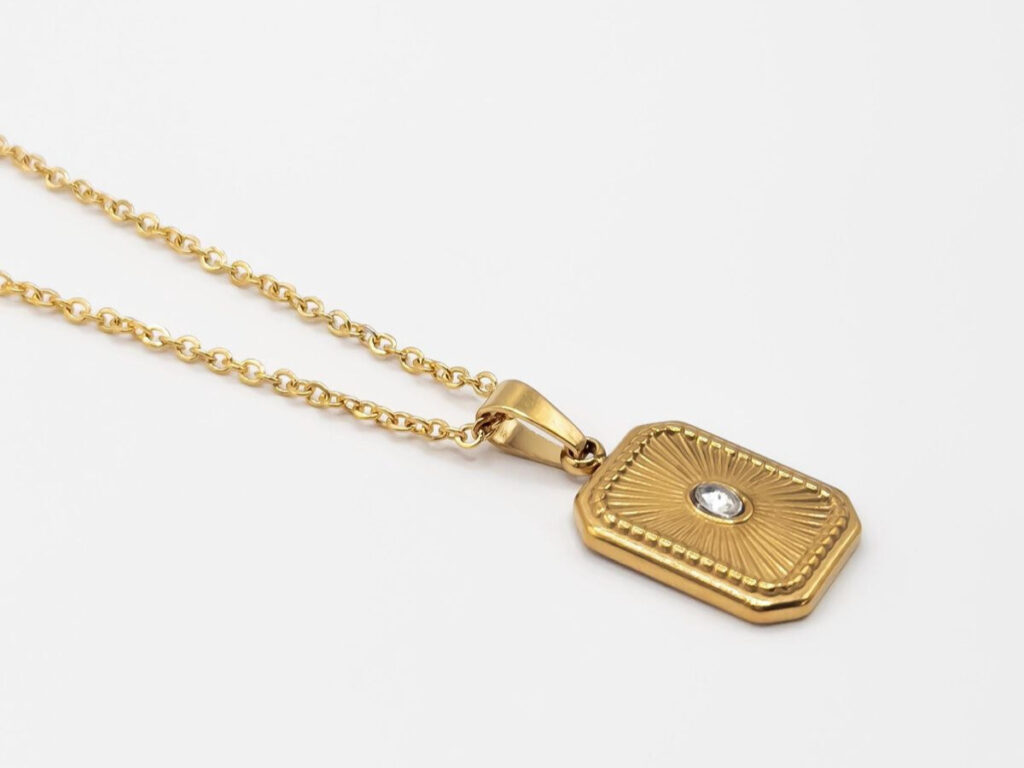
Gold Filled or PVD Gold Jewelry: Which is More Suitable for Your Jewelry Brand?
In analyzing gold filled vs PVD gold jewelry, you will realize that they have their distinct characteristics. Refer to the suggestions below to choose the more suitable option for your brand.
Choosing Gold PVD Jewelry When:
- It’s okay for the base metal to be stainless steel
- Your brand is a hub for fashion and trend-focused jewelry
- Targeting budget-conscious customers
- Expectant lifecycle is 1-2 years
- Seeking active lifestyle options (beach jewelry, ocean-inspired jewelry, everyday waterproof wear collections, etc.)
Choosing Gold Filled Jewelry Mean:
- It’s okay for the jewelry to be largely made of brass or silver
- Accepting a higher price than PVD gold jewelry
- You own a mid-range luxury brand and want to offer the closest alternative to solid gold
- Expectant lifespan is 3-5 years
- Ideal for timeless and artisan pieces
Jewelry Brands That Use Gold PVD or Gold Filled
Here are two popular brands that integrate these gold jewelry types into their collection:
- Jaxxon: Known for its men’s chains and bracelets, as well as unisex jewelry, Jaxxon features gold PVD coating on stainless steel. This results in a rich gold finish that’s highly resistant to tarnish and wear.
- Mejuri: This brand offers various gold filled jewelry, catering to customers who want the lasting quality and the warm tone of genuine gold without the high price tag.
Is PVD Gold Real Gold?
Yes. While the whole jewelry is not made of gold, the bonded tiny layer of gold used is genuine and provides the color, shine, and feel of real gold. One of the methods to tell PVD gold stainless steel is real is through Fisher and X-ray fluorescence (XRF) test, helping you tell if the PVD gold is real and meets standards.
Is Gold Filled Jewelry Real Gold?
Yes. The jewelry is not 100% gold, but it contains a high amount of real gold. To confirm that a gold filled jewelry is real, the gold content in this jewelry must make up at least 5% or 1/20th of the jewelry’s total weight.
Can You Shower with PVD Gold Jewelry?
Yes, you can. However, to extend the jewelry’s lifespan, you have to consider best practice for wearing PVD stainless steel in the shower water. Soaps, shampoos, and hard water can leave residues that dull the gold layer over time. To preserve its shine and durability, always rinse, wipe, and thoroughly dry your jewelry after showering.
Can You Shower with Gold Filled Jewelry?
Yes, it’s usually safe to bathe without taking off your gold filled jewelry. However, shampoos and soaps may cause the gold layer to dull over time. Just like maintaing PVD gold jewelry, always wipe and dry your gold filled pieces thoroughly after contact with water or products.
Conclusion
In summary, gold filled vs PVD gold jewelry differs in composition, manufacturing method, durability, and cost. Each serves different needs depending on your needs and brand’s objectives.
If you’re unsure which option is better for you, consult a custom jewelry manufacturer for expert guidance and tailored solutions.
